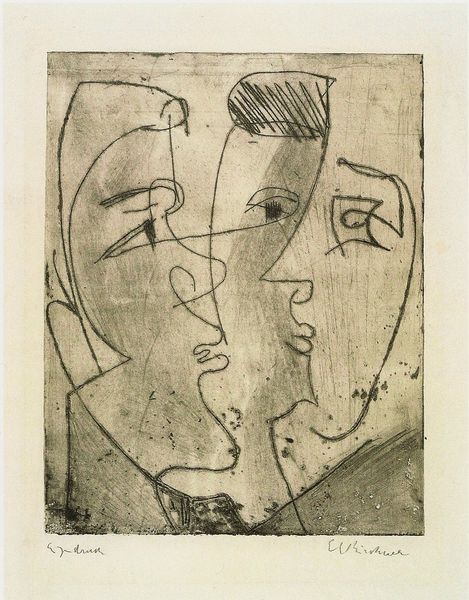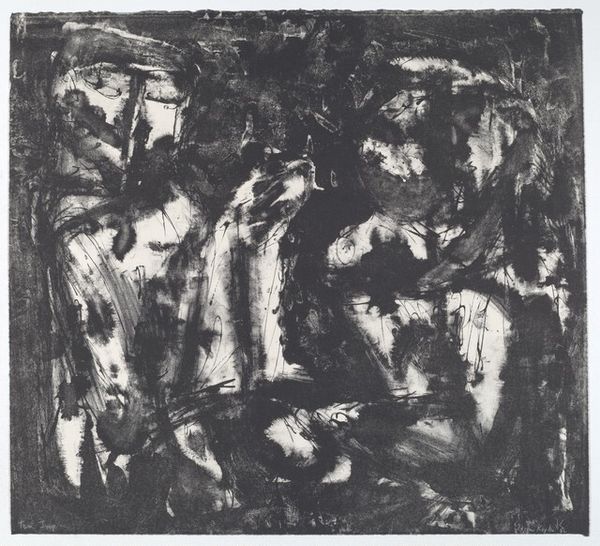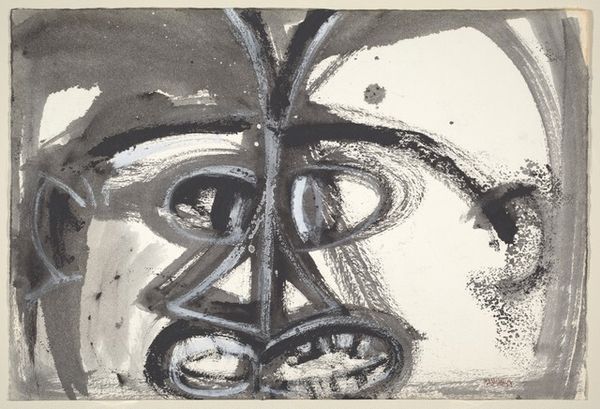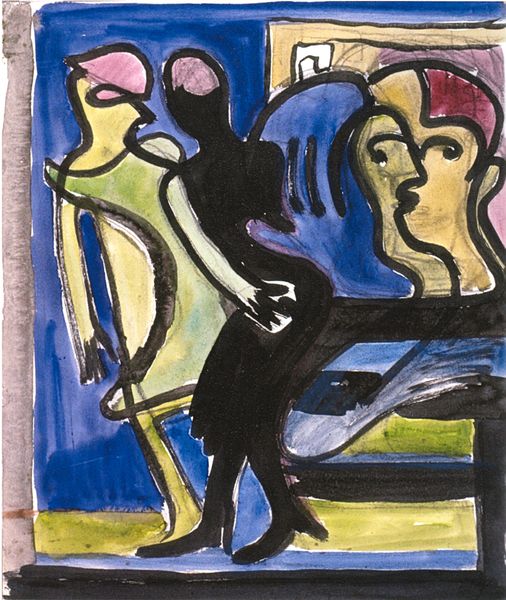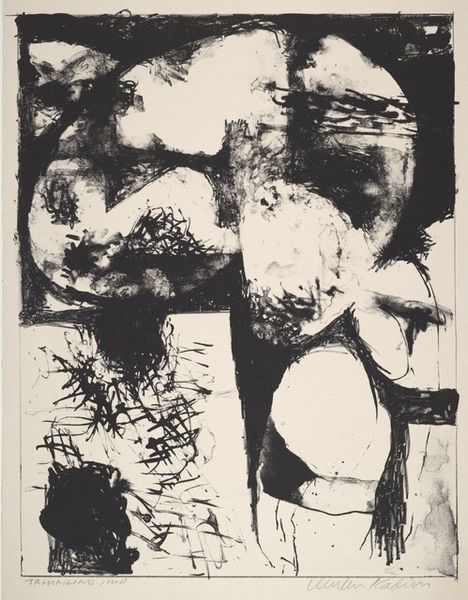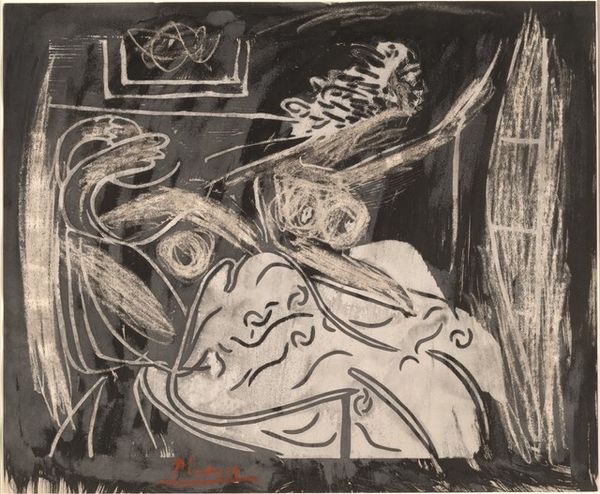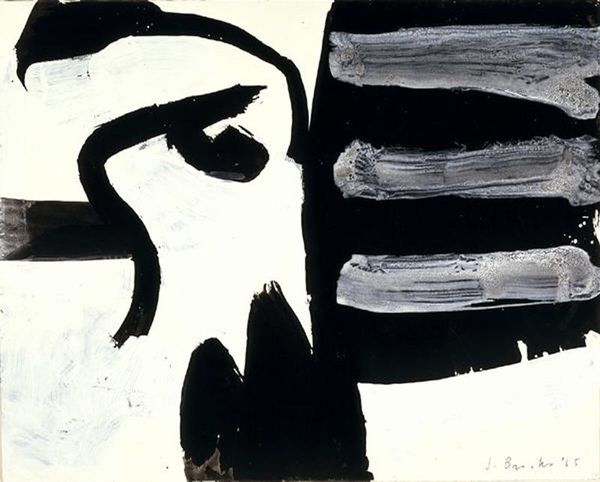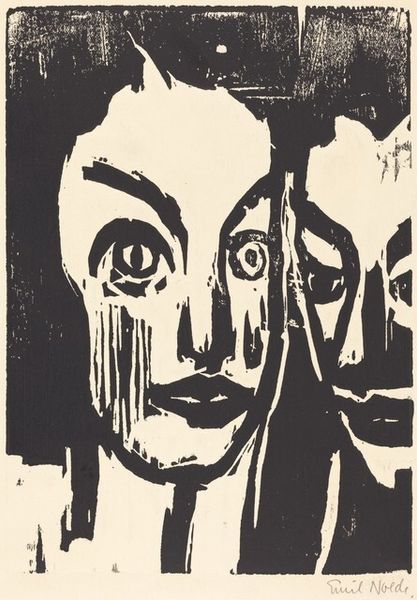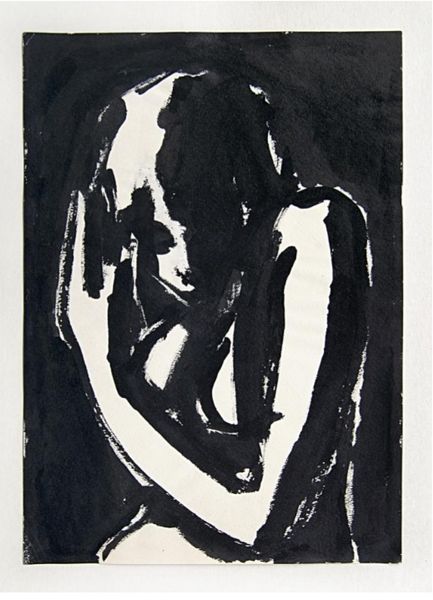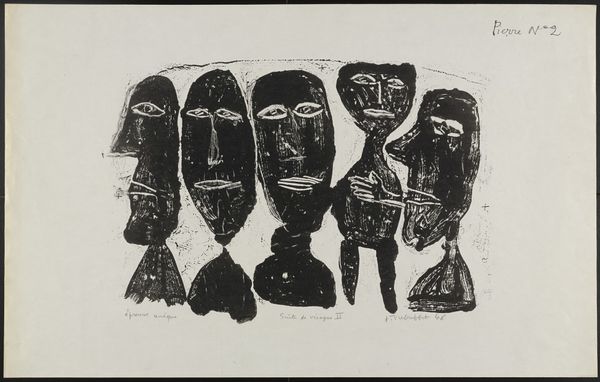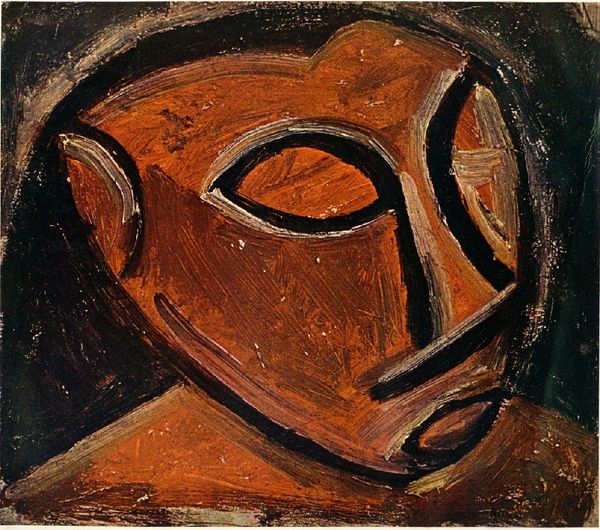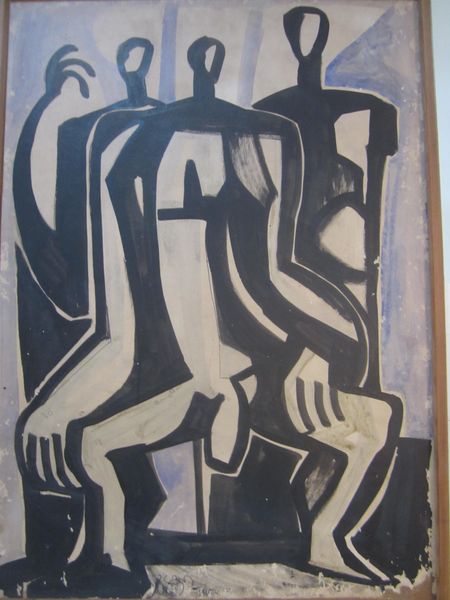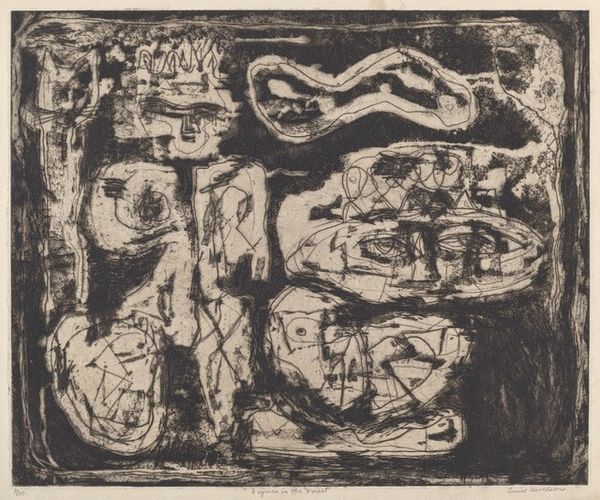
drawing, mixed-media, matter-painting, charcoal
#
portrait
#
abstract-expressionism
#
drawing
#
mixed-media
#
matter-painting
#
charcoal art
#
art-informel
#
abstraction
#
charcoal
#
portrait art
Dimensions: sheet: 27.8 x 37.8 cm (10 15/16 x 14 7/8 in.) support: 28.6 x 38.8 cm (11 1/4 x 15 1/4 in.)
Copyright: National Gallery of Art: CC0 1.0
Curator: Upon initial viewing, this mixed media work titled "Colloque II" from 1946 strikes me as deeply unsettling. The stark charcoal against a pale background… It evokes a primal fear. Editor: Well, yes, there is something deeply stark about its visual language. The drawing by Jean Dubuffet reminds us of art brut and it challenges established aesthetics in a society undergoing profound societal shifts. The work invites consideration around outsider perspectives and marginalization. Curator: The faces – or what seem to be faces – are like masks, almost ritualistic in their blankness. Look how the shared darkness between them could suggest a common thought, or maybe opposing internal monologues, endlessly looping. Do you see an echo of older iconography here, the mirroring of Janus for instance? Editor: Absolutely, these are images of dueling narratives – Dubuffet's choice to show visages but strip them bare creates an emptiness, leaving space for projections about collaboration in a postwar world and also perhaps to question what collective action might entail in that context. What expectations should we bring? The medium adds to this. Curator: The application of matter painting, this almost violent layering… is compelling. The texture isn't just visual; it almost seems tactile, drawing out deep rooted associations with earth, the elemental. Matter as memory made manifest. It evokes an ancient power, doesn't it? Editor: Exactly. Its powerful social context challenges assumptions, but how might these faceless subjects be symbolic? Are they individuals or representatives? This prompts questions regarding individual responsibility versus the collective conscious when facing trauma or building for the future. Curator: The interplay of black and white also resonates with themes of opposition – shadow and light, the conscious and the unconscious. Editor: The “Colloquy”, the interaction, isn't harmonious – perhaps echoing the tensions of postwar reconstruction as social structures underwent great change. Curator: Ultimately, the power here is to reflect the disquiet that still emanates from the past – it’s a mirror held up to the complexities of identity and responsibility that extend into our present. Editor: This unsettling and thought-provoking piece demonstrates a remarkable and enduring example of postwar reckoning that makes us face complex societal challenges and invites us into an important contemporary dialogue.
Comments
No comments
Be the first to comment and join the conversation on the ultimate creative platform.

